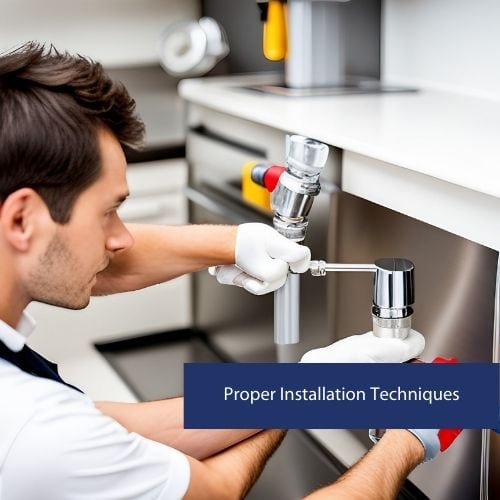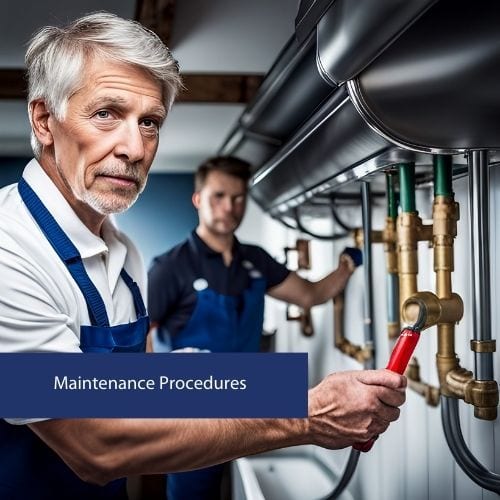As a plumbing regulations specialist, I’m passionate about helping others understand the complexities of commercial property plumbing. What every commercial plumber in oklahoma city should know is not just a statement, but a guidepost for professionals in the field. It’s my job to ensure that people have access to all the information and resources they need for their projects. There are many rules and regulations surrounding commercial properties, and understanding them can be confusing if you don’t know where to look. In this article, I’ll provide insight into what you should consider when navigating these rules so you can make informed decisions for your business or organization.
By focusing on key points such as local codes, proper installation techniques, and maintenance procedures, we’ll explore how to create an environment that meets both safety requirements and performance standards. With this knowledge in hand, you’ll be able to confidently move forward with your project while feeling secure in your decision-making process!
Local Codes
Plumbing regulations for commercial properties must be observed in order to ensure the safety of occupants and other personnel. Local codes are essential when it comes to ensuring adherence to these standards, especially since they govern the types of materials and installation techniques that may be used. These local codes can vary widely from one region to another; there is no single set of universal standards applicable across all locations. It’s important to familiarize oneself with any relevant laws or ordinances prior to beginning work on a commercial plumbing project.
Familiarity with building regulations, such as those pertaining to waste pipe size and location requirements, will also help prevent costly mistakes during construction projects. Additionally, contractors should always keep up-to-date on local changes in law and inspect sites regularly while working on them so that they can quickly determine if their methods comply with current regulations. With this knowledge at hand, we move forward into proper installation techniques – an area just as critical for successful projects.
Proper Installation Techniques

Having discussed local codes, it’s time now to focus on proper installation techniques. The key here is accuracy and precision in the job of installing pipes, fixtures and appliances. It must be done with an eye towards safety, both for those who will use these devices as well as anyone working on them later. Plumbers should adhere to manufacturer instructions when applicable or else rely on industry best practices that are up-to-date with current regulations.
Of course, there are many variables at play; from environmental conditions that may affect a system to changes in code requirements over time that require modifications. That being said, knowing how to properly install components based upon their specific characteristics is absolutely essential before any maintenance procedures can begin. Moving forward requires adaptability and flexibility in order to stay compliant with all relevant standards – something every plumber should strive for!
Maintenance Procedures

All plumbing systems for commercial properties need to be installed, inspected, and maintained properly. The importance of regular maintenance cannot be overstated; if it’s not done correctly, the consequences can be costly in terms of both time and money.
Here are a few key points on what needs to be done:
- Check all pipes regularly for signs of leaks or blockages
- Unclog any drains that become blocked with grease or other debris
- Replace worn fixtures such as faucets and toilets with new ones
- Clean out pipes and sewer lines using appropriate solutions
To ensure safety, these procedures must be followed closely by trained professionals who have the right tools and expertise. It is also important that these same people inspect the system periodically to make sure everything is working properly. In this way, problems can be detected early before they become serious. With proper care, commercial plumbing systems will remain reliable and efficient while providing high quality services to customers.
Safety Requirements
Plumbing safety regulations are essential for the protection of all commercial properties. This section addresses these requirements to ensure that plumbing systems are functioning safely and efficiently in any building or structure.
First, a licensed professional plumber must be consulted before installing new piping or fixtures. All components must also meet local standards and codes regarding pressure, temperature, drainage discharge, and other technical aspects. Additionally, faucets used in public restrooms should have anti-scald devices installed. These guards protect people from accidental burns due to sudden changes in water temperatures.
To further prevent accidents and injuries related to plumbing malfunctions, it is important that maintenance inspections take place on a regular basis. Any potential problems like loose connections or blockages need to be identified quickly and remedied as soon possible so as not to compromise safety. With these measures in place, property owners can rest assured that their buildings are well-equipped with safe plumbing systems. Moving forward then, it’s time to consider how performance expectations fit into this conversation about plumbing regulations for commercial establishments.
Performance Standards
To continue on the topic of safety, performance standards are just as critical for any commercial plumbing system. Just like a car engine needs its oil changed to keep it running smoothly, these systems need regular maintenance and upkeep in order to ensure they’re working optimally. This is where performance standards come into play—they provide guidelines to maintain high-level output from all components of the plumbing system.
Think of these regulations as a checklist that helps you prevent any breakdowns or malfunctions before they even happen. As the old adage goes, an ounce of prevention is worth a pound of cure! Here are some key points regarding performance standards:
- Make sure all valves open and close properly
- Check pressure relief devices regularly
- Ensure water temperature stays within approved parameters
The bottom line here is that with proper care and attention, your plumbing system will remain functional; otherwise, you may be facing costly repairs down the road. Taking preventive steps now can save time and money while keeping everyone safe in the long run.
Conclusion
It’s important to understand plumbing regulations for commercial properties in order to ensure the safety of all occupants and visitors. Local codes provide guidance on proper installation techniques, maintenance procedures, and performance standards. By following these guidelines, we can reduce the risk of hazardous water pressure or overflow issues that could cause injury or property damage.
However, some may argue that complying with all of the requirements is too difficult and costly. I believe this concern is unfounded as there are many resources available to help businesses comply with local regulations at minimal expense. With a little effort, businesses owners can protect their customers and employees while avoiding expensive fines or other penalties associated with noncompliance.



